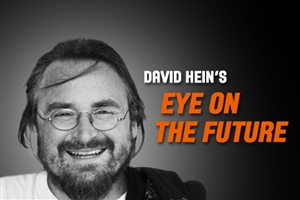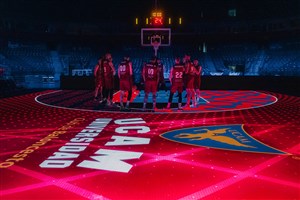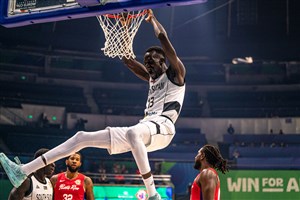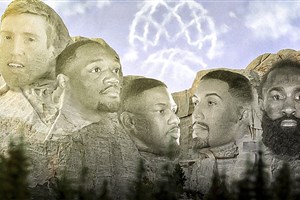
Dribblin' in the dirt
Charlotte (Steve Goldberg's Wheel World) - It was a loud and raucous sellout crowd at the North Greenwich (better known as the O2) Arena for the gold medal games of the London 2012 Olympic and Paralympic basketball tournaments. The only difference was the athletes.
That's been the case in pretty much all the Olympic and Paralympic Games since 1988.
I saw my first wheelchair basketball in the same Jamsil Gymnasium in Seoul where I had watched the hot-shooting Rimas Kurtinaitis and his Soviet Union team beat the USA without needing three chances to do so in an Olympic Semi-Final a couple weeks earlier.
So it was in Barcelona at the Pavello Olimpic de Badalona, and Athens at the Olympic Indoor Hall.
There might be a slight difference, such as Beijing where the main venue for wheelchair basketball, the 18,000 seat National Indoor Stadium, was used for artistic gymnastics and handball in the Olympics. The Olympic finals were in the equal sized Wukesong Culture & Sports Center. Different building perhaps but far better for me because it was in the Olympic Park and very close to the media center.
In Atlanta, the Olympic Final was in the cavernous football stadium sized Georgia Dome, while the Paralympic Final was in the much-better-for-basketball Omni that was home to the NBA's Atlanta Hawks.
It certainly wasn't the case in 1960. While the Olympic basketball tourney - won by a USA team featuring Jerry West, Oscar Robertson, and Walt Bellamy - was held at the Palazzo dello Sport, their American counterparts such as Saul Welger, Percy Mabee, and Ron Stein had to deal with other elements than just the opposing players.
Like rain and wind.
The Paralympic basketball tournament games were held outside on a compacted surface at the Tre Fontaine Sports Centre. If manipulating those heavy steel wheelchairs wasn't hard enough, doing it in the dirt made it so. The tournament had two divisions - no women yet - based on the degree of spinal cord dysfunction.
The Americans won both, not just on talent and tradition but perhaps helped a bit by the fact that they had put more effort into modifying their chairs for the game in terms of weight and maneuverability.
An American player, Paul Sones, marveled at what the opposition used in the book Wheelchairs Can Jump: "There were chairs of every description. I vividly remember a South Rhodesian athlete with a chair that was chain-driven by hand cranks and a Belgian athlete who played basketball in basketball in an upholstered chair that looked like something you would find in your living room."
It wasn't just Rome. The 1968 Paralympic hoopsters also played outside but at least this time a wooden court was built for them next to but not inside the National Gymnasium Annex in Tokyo where the Olympians had played. Also helping was a large translucent roof over the court that in photos gives it the look of an airplane hangar.
Digging deeper, I learned that the first two outdoor Paralympic basketball tournaments were perhaps closer to the Olympic ideal than we knew.
On page 1074 of the official report of the XIth Olympic Games held in 1936 in Berlin, there's a section dedicated to basketball which was an official Olympic sport for the first time after having had exhibition status at the Olympics of St Louis (1904), Paris (1924) and Amsterdam (1928).
Halfway down the page, there is a line that reads: "Contrary to the established practice before the Berlin Games, the International Basketball Federation had expressed the wish that the tournament not take place indoors, but in the open air. The German Organizing Committee granted this request and set aside the lawn tennis courts of the Reich Court Field for the matches."
So yes indeed, the very first Olympic basketball tournament was also going to be contested outside.
"To ensure absolutely satisfactory playing fields, the surface of the lawn tennis courts was hardened, so as better to resist the wear and tear of the game. Although the playing fields were in excellent condition in every respect - this was also the opinion of all competing teams - the International Basketball Federation decided, after the conclusion of the tournament, to advise its members to play on wooden courts in the future."
Notice that while wooden courts were recommended, playing indoors was not so the wind and sun could still be factors in future tournaments. It wouldn't be because it certainly was in this one.
The official report, like most official reports, is very detailed and provides the weather conditions for each day and round of the tournament. For all games on the seven days leading up to the medal matches on August 14, 1936 the weather was dry ranging from overcast to sunny skies, temperatures from 19° Celsius (66° Farenheit) to 25° C (77° F), and the wind varying from "practically no wind" to "perceptible wind equally disadvantageous to both opponents.
No such luck for the final day as the report read: "Weather: Rain during the whole match. Temperature: About 14° C (57° F). The ground was completely soaked. The match, which was scheduled to commence at 6 p.m., had to be postponed 25 minutes, while efforts were made to improve the ground. Slight wind."
It was the third game of the day on a court that degenerated to mud. That could explain the score. The USA beat Canada 19-8 for the gold.
So there you have it. Both the Olympic and Paralympic Games started their basketball tournaments by dribblin' in the dirt.
Thanks to the LA84 Foundation for their wonderful Olympic reference library and once again to wheelchair basketball historian Tip Thiboutot and his book Wheelchairs Can Jump for access to the information cited above. I highly recommend them both to basketball fans sitting or standing.
Steve Goldberg
FIBA
FIBA's columnists write on a wide range of topics relating to basketball that are of interest to them. The opinions they express are their own and in no way reflect those of FIBA.
FIBA takes
no responsibility and gives no guarantees, warranties or
representations, implied or otherwise, for the content or accuracy of
the content and opinion expressed in the above article.
To help
make this column as inclusive as possible, please send any national or
international event information, story suggestions, or comments to wheelworldmail@gmail.com.

















